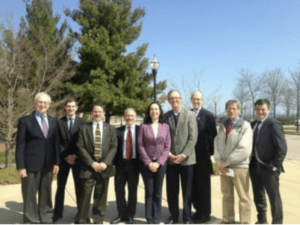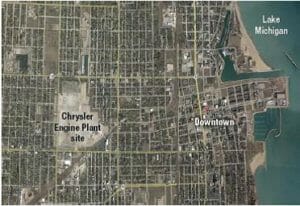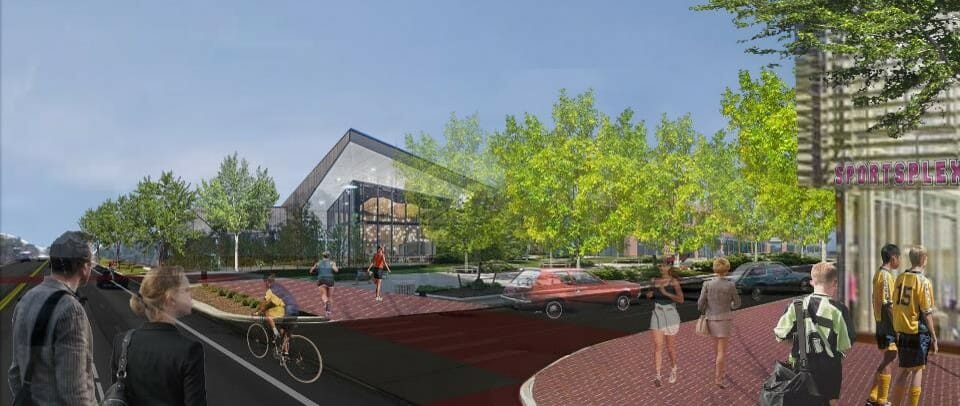Top Story
Date: April 19-14, 2015
Location: Kenosha, Wisconsin
Sponsor: City of Kenosha
Subject Area: Redevelopment
Panel Chair:
David Stebbins
Vice President
Buffalo Urban Development Corps.
Download Full Report
Background and Panel Assignment
The City of Kenosha has a long history of automotive manufacturing, dating to the early days of the 20th century. The former Chrysler Engine Plant site has been an automotive manufacturing center since 1917. This site and the lineage of Nash-American Motors and Chrysler Automobile have played an integral part in this community for several generations of Kenoshans. The original Nash Automobile Company was instrumental in the rise of the city of Kenosha as a manufacturing center. This history means many in the community have a strong emotional attachment to this site and an interest in what the future may hold for it.
Mayor Keith Bosman and the city of Kenosha requested the assistance of the Urban Land Institute to assist with the formulation of a plan and development strategy for the reuse of the former Chrysler Engine Plant site. Located east of downtown Kenosha between 52nd and 60th Streets, the 107-acre site is bordered on the east and west by residential neighborhoods, with a mix of light industrial and commercial uses along 52nd Street and 60th Street. All buildings on the site were removed down to the foundation in 2012–2013 by the Old Carco Liquidation Trust, which received title to the site in 2010 after manufacturing operations halted at the plant.
 The panel was asked a series of questions to begin the long-term process of redevelopment; to suggest a land use plan for the site; to connect and integrate the site to the surrounding neighborhoods, Uptown and Downtown; and to create a strategic plan for the city to use to implement the plan. These questions included the following:
The panel was asked a series of questions to begin the long-term process of redevelopment; to suggest a land use plan for the site; to connect and integrate the site to the surrounding neighborhoods, Uptown and Downtown; and to create a strategic plan for the city to use to implement the plan. These questions included the following:
■ What are the arrays of land uses that are economically feasible to be included in the redevelopment of the site?
■ What type or amount of public use components should be considered in the redevelopment plan?
■ How can the site be most effectively linked to the Uptown and Downtown districts?
■ What influence (i.e., assets or liabilities) will the surrounding neighborhood have on the redevelopment plan?
■ What are the critical steps and sequence of events that are required to effectively redevelop the site?
■ Describe the role and responsibilities of the city in regard to the strategic plan for the redevelopment of the site.
Summary of Recommendations
 Following an intense week of interviews, site tours, and discussions, the panel recognized a transformational opportunity for the city to demonstrate its resilience, strengthen key partnerships, and promote entrepreneurship and small business development through the redevelopment of this site. A lengthy remediation period of perhaps five to six years will be required, which means the development framework needs to be flexible rather than prescriptive.
Following an intense week of interviews, site tours, and discussions, the panel recognized a transformational opportunity for the city to demonstrate its resilience, strengthen key partnerships, and promote entrepreneurship and small business development through the redevelopment of this site. A lengthy remediation period of perhaps five to six years will be required, which means the development framework needs to be flexible rather than prescriptive.
Ultimately, the plan seeks to create a 21st century innovation neighborhood focused on health, wellness, education and knowledge, entrepreneurship, and training as well as to incorporate partnerships of education, business, and government. The panel’s recommendations include:
- Guidance to establish a new urban grid within the site that will enhance connectivity to the surrounding neighborhoods, Downtown, and other areas of the city.
- Development strategies that outline a phasing process and subdivision of the site into smaller, more manageable parcels that are more in character with this section of the city and encourage small business development and social interaction.
- Implementation strategies that present important actions for the city to undertake in preparation and during development, as well as interim uses to begin the activation of the site, along with a series of preparatory actions to ensure that the city and the site are ready for development when remediation is completed.
